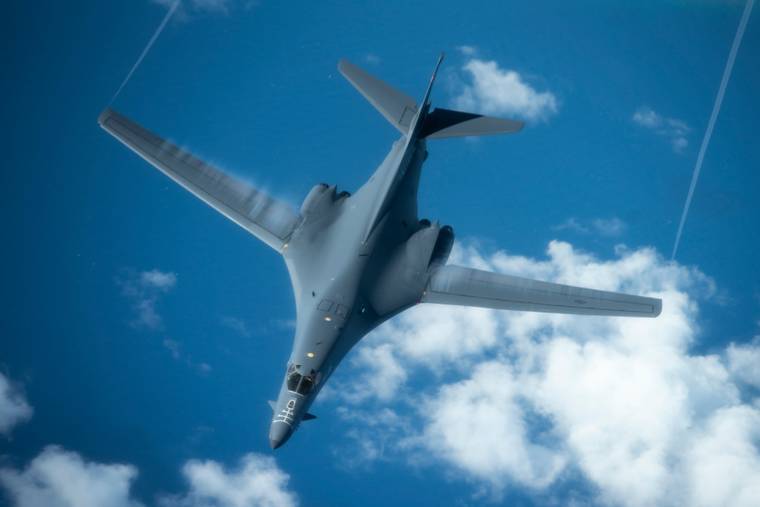The head of the U.S. military in the Indo-Pacific wants to base an Aegis Ashore missile defense system on Guam similar to one used for testing on Kauai.
Adm. Phil Davidson also seeks to link training ranges in Hawaii with those across the vast distances of the Pacific to prepare for the possibility of a markedly different type of conflict.
Davidson, who is headquartered on Oahu, said an “emboldened” China seeks to exploit the global pandemic crisis, “and they’re doing so with more assertive military behavior (and) maligned diplomatic and information behavior” throughout the region.
Plans for enhanced U.S. military capabilities are proceeding amid ever-worsening relations with the rising Asian power.
On July 13, Secretary of State Mike Pompeo said the United States was “strengthening” U.S. policy in the South China Sea by declaring illegal many of China’s vast claims to the region.
“We are making clear: Beijing’s claims to offshore resources across most of the South China Sea are completely unlawful, as is its campaign of bullying to control them,” Pompeo said.
Pompeo said the world “will not allow Beijing to treat the South China Sea as its maritime empire.”
Pompeo followed that up July 23 by saying that “China is increasingly authoritarian at home and more aggressive in its hostility to freedom anywhere else.”
China Foreign Ministry spokesman Wang Wenbin said Tuesday, “One cannot help but wonder: Are some U.S. politicians trying to stir up troubles in the South China Sea?”
He added, “We must tell Pompeo that the South China Sea is not Hawaii; the regional countries and all the peace-loving people won’t stand by if several U.S. politicians attempt to muddy the waters.”
Denny Roy, who specializes in Asia-Pacific security at the East-West Center in Honolulu, said the “Hawaii” comment “echoes a Chinese sentiment we’ve heard before: that Beijing can acknowledge a U.S. sphere of influence in the eastern Pacific Ocean if the U.S. will acknowledge a Chinese sphere of influence in the western Pacific.”
It isn’t officially stated Chinese policy, “but I think Chinese strategists like the idea of ultimately dividing the Pacific Ocean in half, with Hawaii as the westernmost outpost of the U.S. half,” Roy said.
Indo-Pacific Command’s Davidson, speaking July 21 to a group of defense writers, said the “first step” and “No. 1 priority” in a “Regain the Advantage” plan he put together to counter China is “360- degree” integrated air defense capability he said he is calling Homeland Defense System Guam.
Guam hosts a significant Navy and Air Force presence.
Davidson said an Aegis Ashore missile defense system could be delivered by 2026, when the threat will require “a much more robust capability” than the current combination of a Terminal High Altitude Area Defense system and a Navy warship with some ability to shoot down a ballistic missile.
“At the heart of it, THAAD and an Aegis ship (are) meant to defend against a pretty small wedge of the clock, if you would, against a North Korean rogue missile shot against Guam,” he said. “When you look at the way the threat capability, the threat capacity, is manifesting from China in the future, whether it’s ballistic missiles from the land or whether it’s ballistic or cruise missiles from air and maritime platforms, you’re going to need a complete clock, a 360-degree coverage in order to help defend Guam.”
The Aegis Ashore Missile Defense Test Complex at the Pacific Missile Range Facility on Kauai replicates increasing ship-based capability to shoot down ballistic and cruise missiles.
Aegis Ashore on Guam would be fitted with an advanced SPY-6 radar, and its launch tubes could be loaded with new SM-3 Block IIA missiles that are expected to be able to shoot down long-range intercontinental ballistic missiles, as well as SM-6 interceptors for cruise missile threats. The system would be linked to other radars and missile defenses.
The Aegis Ashore site on Kauai is expected to have similar capability for the defense of Hawaii.
The land-based radars are more cost-effective than parking a $2 billion destroyer and crew off Guam with ballistic missile shoot-down abilities.
Davidson also said he wants to link training ranges such as Pohakuloa Training Area on Hawaii island and Kauai’s Pacific Missile Range Facility with ranges in Japan, Kwajalein, Australia, Alaska and on the mainland as well as planned sites in the Northern Mariana Islands.
Davidson noted increasing capabilities of long-range missiles from the sea, air and land — which would define a future conflict with a peer competitor like China.
“You need a wider network of ranges, and by the way, that network of ranges has got to be able to simulate a higher capacity and capability of opposing forces to you,” he said.
Defense Secretary Mark Esper said July 21 that in tandem with the Pacific designated as the Pentagon’s priority theater, the Navy is developing a more survivable fleet, the Marines are becoming leaner and faster, the Army is prioritizing long-range weapons and the Air Force is focused on stealth capabilities.
Esper said U.S. policy in the South China Sea — the biggest potential flashpoint for conflict with China — is consistent with international law, favors the sovereign rights of Southeast Asian partners and rejects Beijing’s “excessive and unlawful maritime claims.”
“Our actions back up our policies,” Esper added. “In 2019 we conducted the greatest number of freedom of navigation operations — FONOPs — in the South China Sea in the 40-year history of the FONOPs program, and we will keep up the pace this year.”
Also, on two occasions in July, two aircraft carrier strike groups exercised together in the South China Sea for the first time since 2012, “a clear and powerful signal that we will fly, sail and operate wherever international law allows,” Esper said.

